
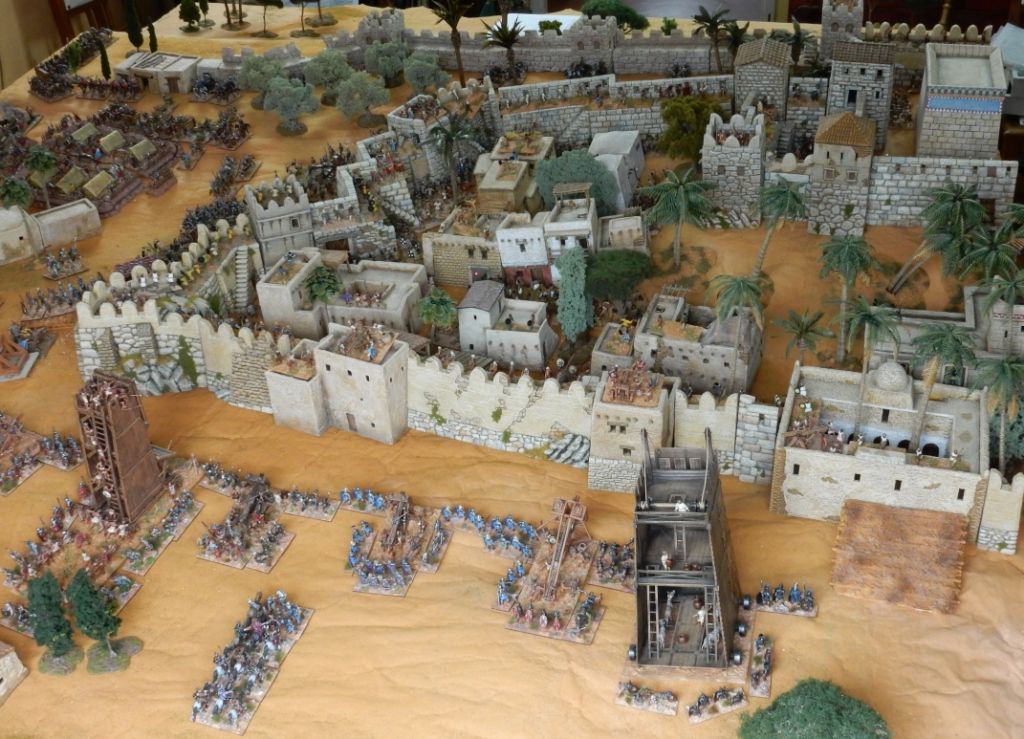
The greatest challenge for me has always been the recreation of the historical terrain. No cities' history and archaeology has been studied and reconstructed so intense as Jerusalems. But concerning the city walls during 70AD opinions changed through the years.
I choose for the later interpretations of the most probable course of 'Josephus 2nd wall' as recorded in Josephus book 'The Jewis War'.
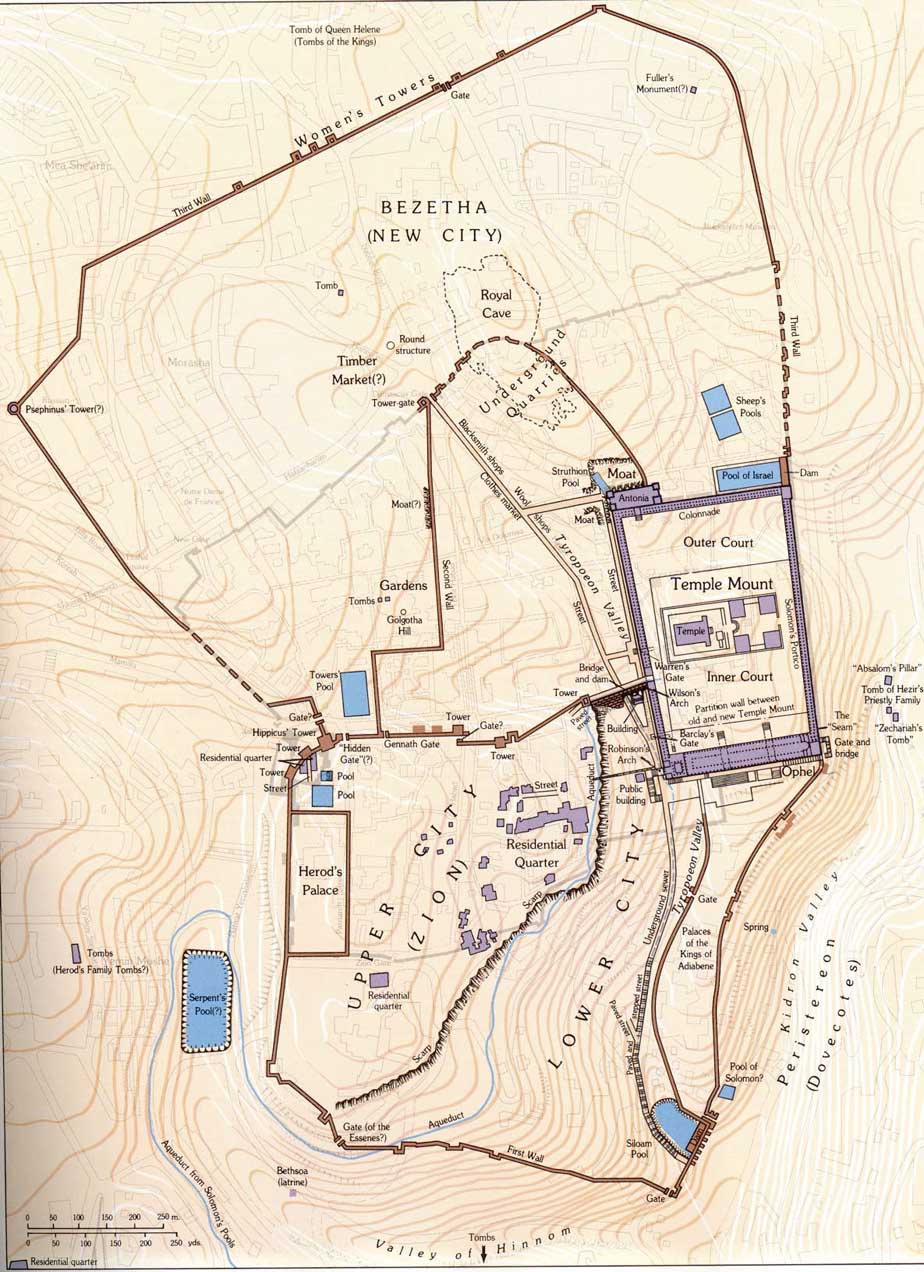

How the Romans entered the city according to Josephus:

Our game starts after Titus took the (most northern) 3th wall and build his new army camp within the New City, a suburb that was still in development and not occupied by many buildings yet. Here he besieged the 2th wall.
The section I tried to rebuild:

For the representation of a corner of the Temple Mount, the Antiona Fortress, the 2nd wall and part of the 3th wall (foreground) I used a hotch potch of my ancient Greek, Phoencian and Roman Hadrianic walls:
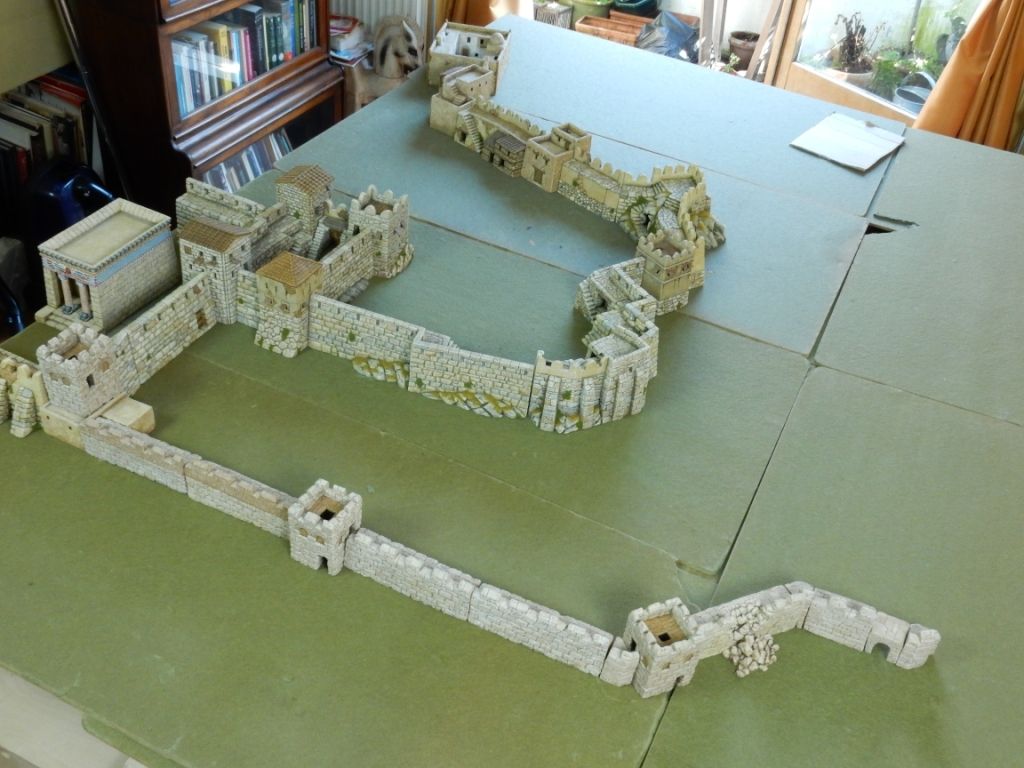
Because all of these sections are painted in similar tones, they fit together pretty well.
Both of these pictures show the same area in the right-centre: the first as a build up area, the second as a green park:

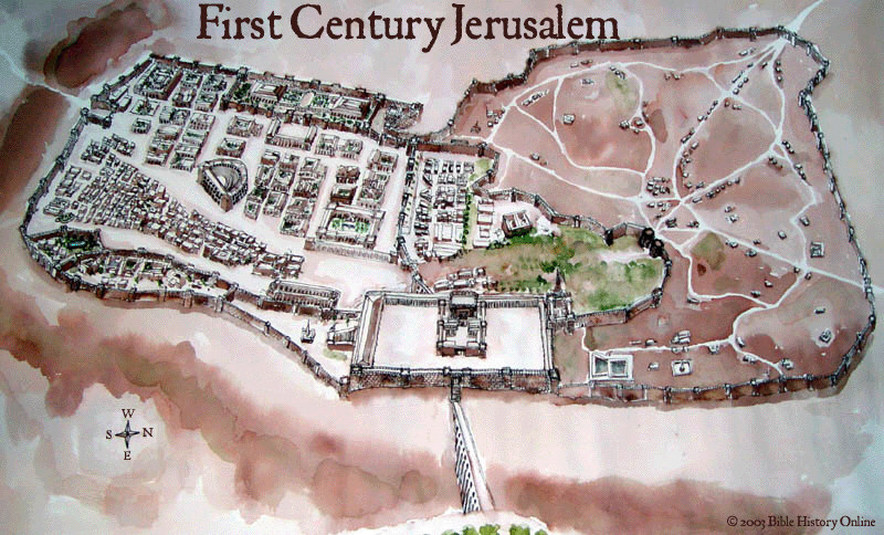
Our Antonia Fortress and the 2nd wall:
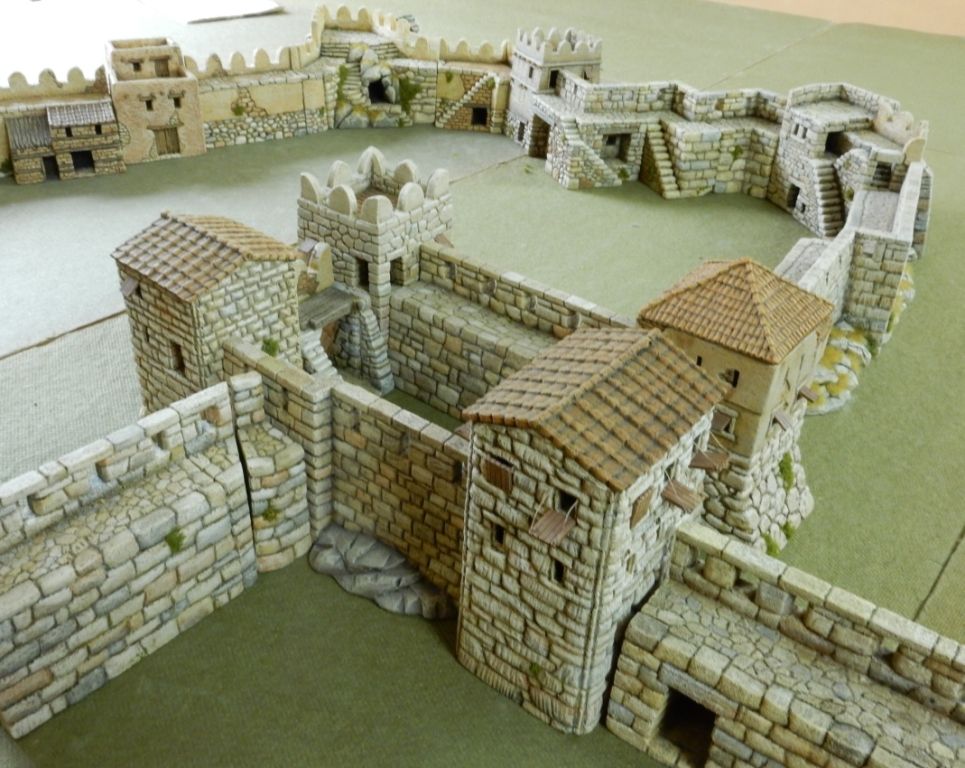
After the rough lines of the citywalls are layed out, the terrain is accidented by several layers of foam blocks under the table cloth. Mr. Bos surprised us with new Mediterranean shrubs he made, perfect for the vegetation on the steep slopes of the Kydron Valley that was a no go area for Roman siege machines:

All terrain features are replaced again on top of the tablecloth:
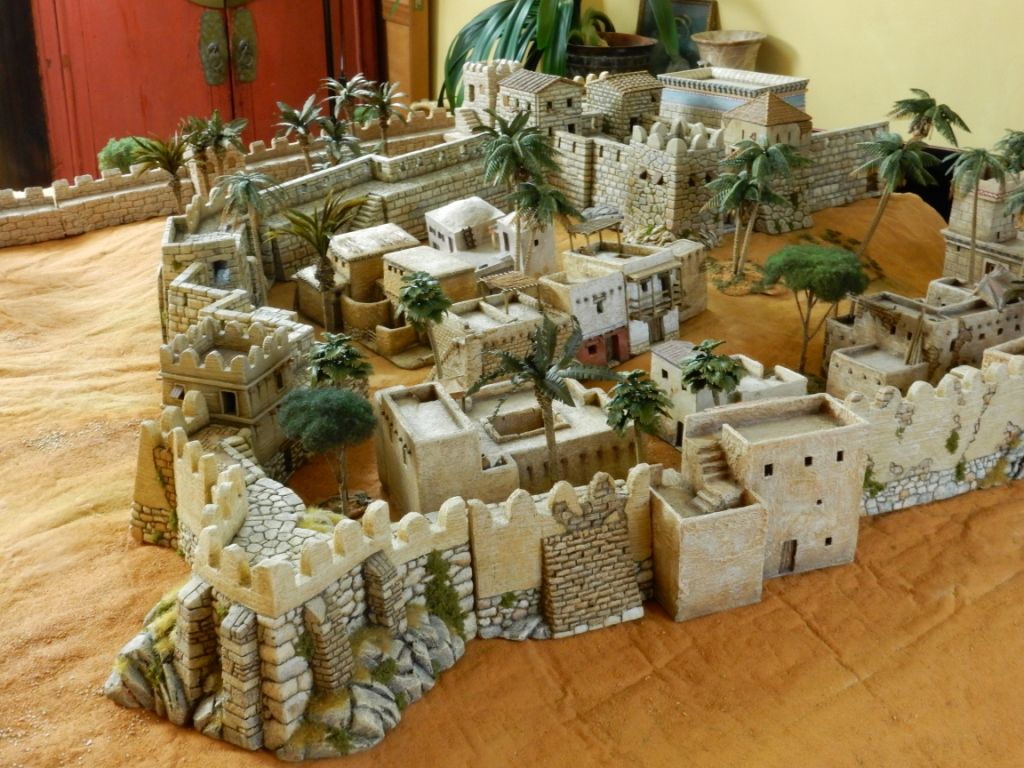
Temple mount and Antonia Fortress are higher than the rest of the city now.
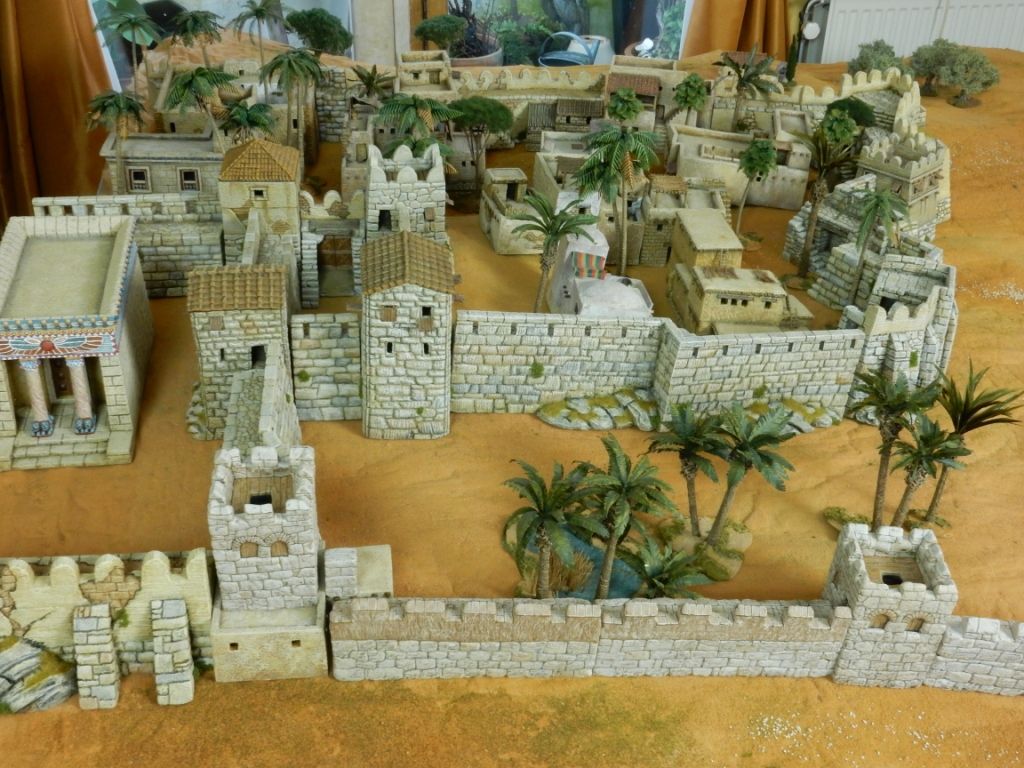

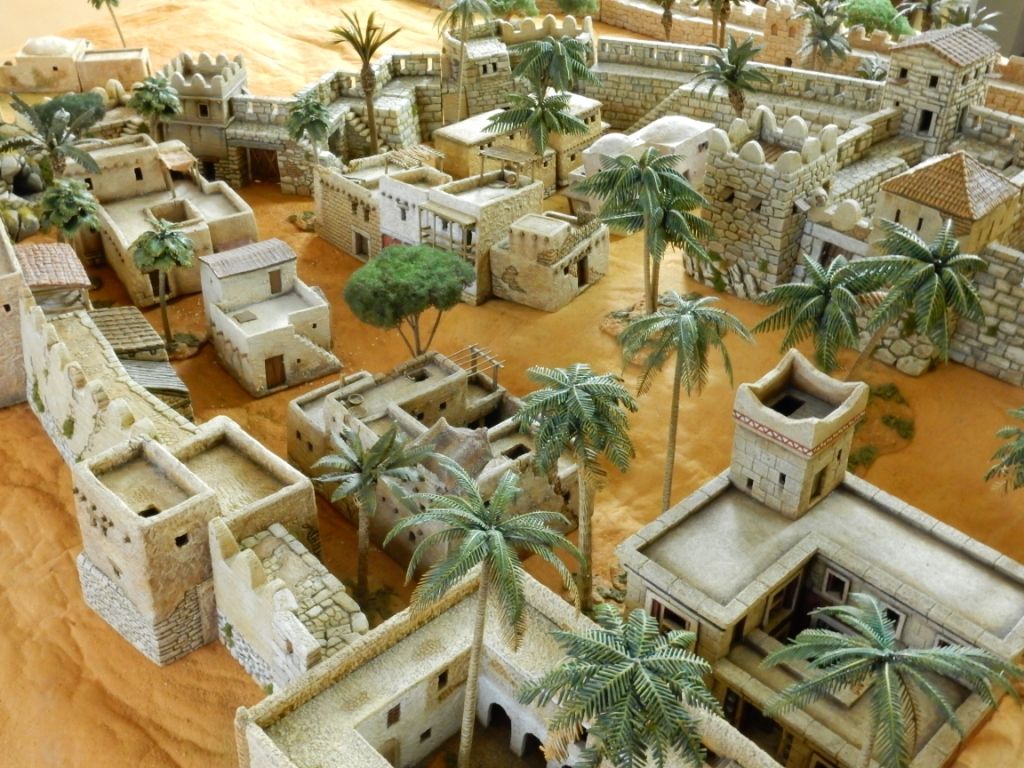
The city was desperately defended by Jewish groups, non-cooperating, hating and distrusting each other, like Zelotes, Judeans, Idumeans, Samaritans and Gallileans. They fought with light arms, as skirmishers, bowmen, hordes and religious suicide fanatics. Some had armour looted from the Romans in the years before and using some looted balista's too.
Because we have no single Jewish figure in our collections, I was forced to select a hotch potch of Greek, Minor Asian and Persian light troops and masses, which I will not show in close up since there is no historical relevance:
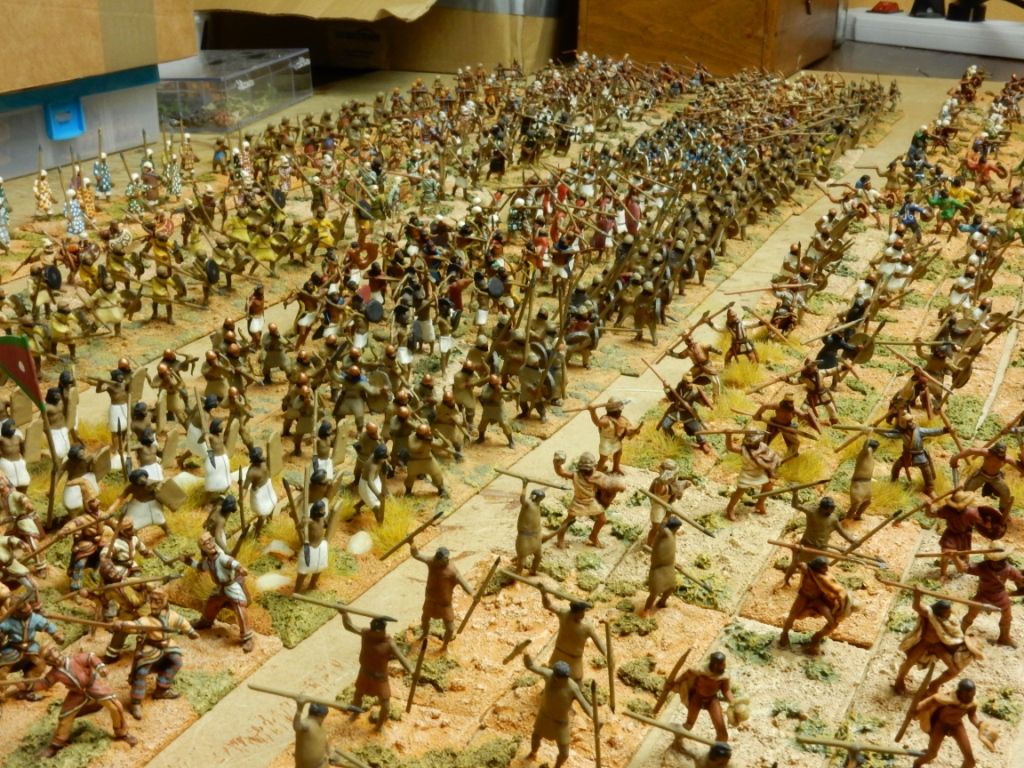
Many of these are conversions made of Atlantic Egyptians and Matchbox/Airfix WW2 figures during the 1980's. All together 500 army points according to our DBMM counting system excluding the value of the fortifications.
Opposed by Mr. Bos his Romans (900 army points) that are mostly Streletz figures and thus a perfect representation for the Roman army in Vespasian's time. To strengthen his siege machines we added some Macedonian siege elements.
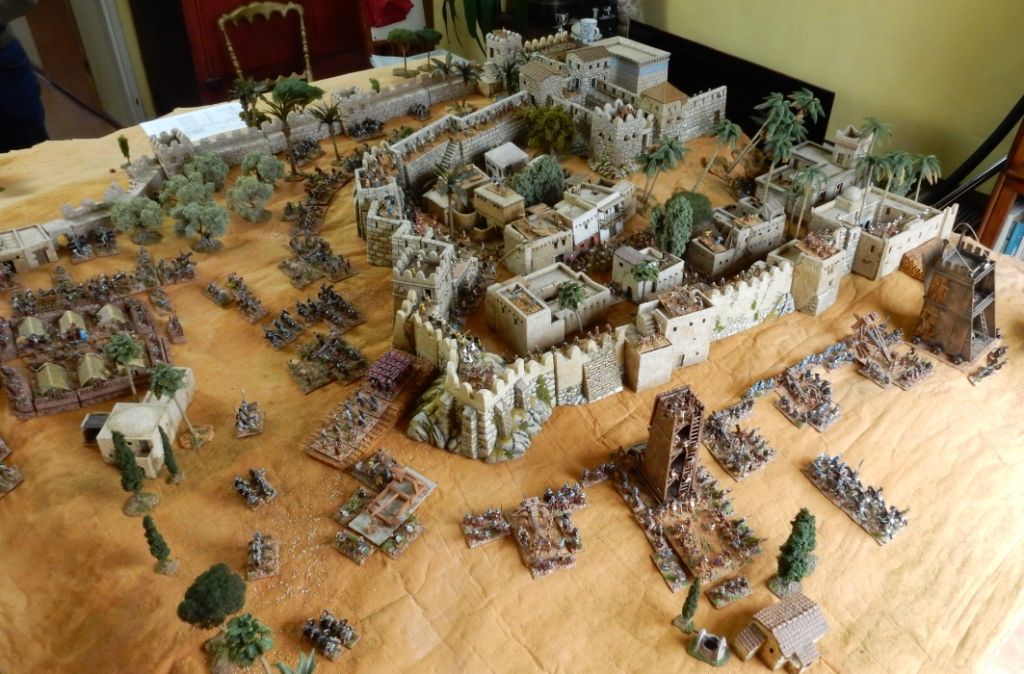
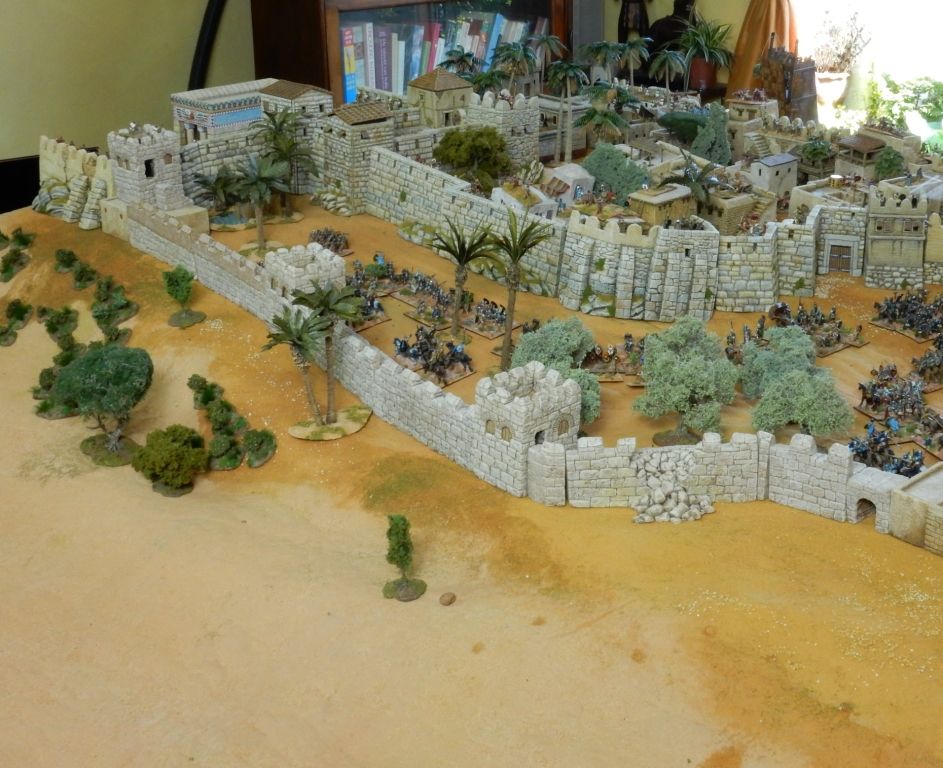
The lower wall foreground (designed as Hadrians wall by me in 1986) is made of potters clay. The walls in the background are made of styrodur foam in 2010 as Hellenist walls.
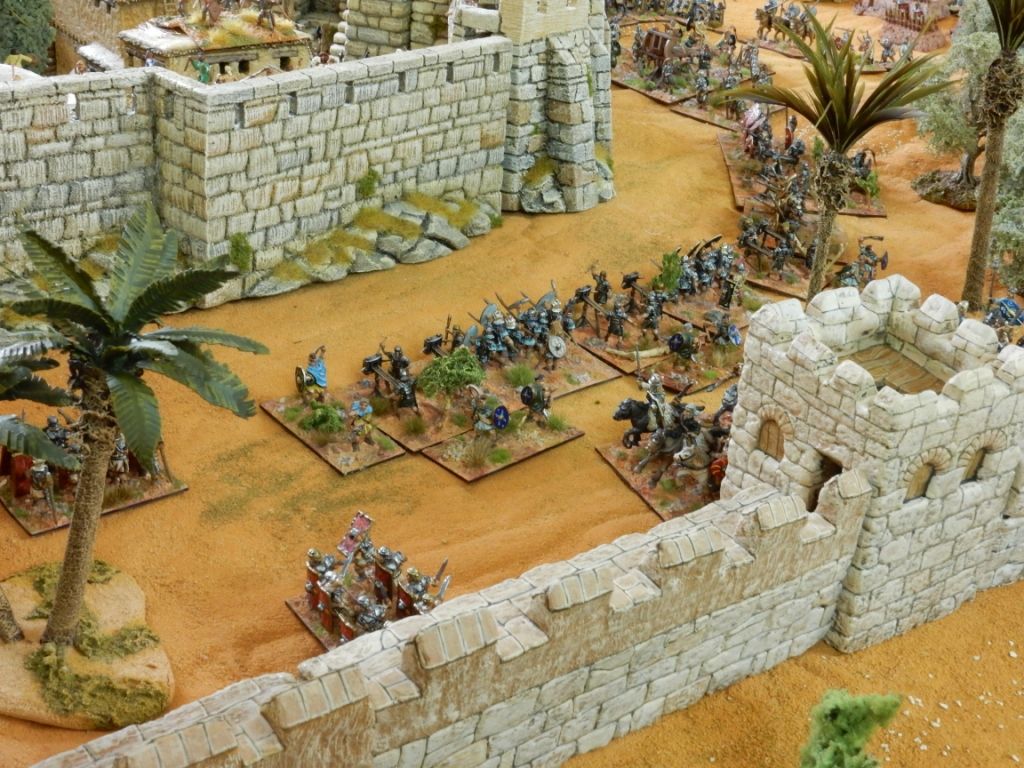
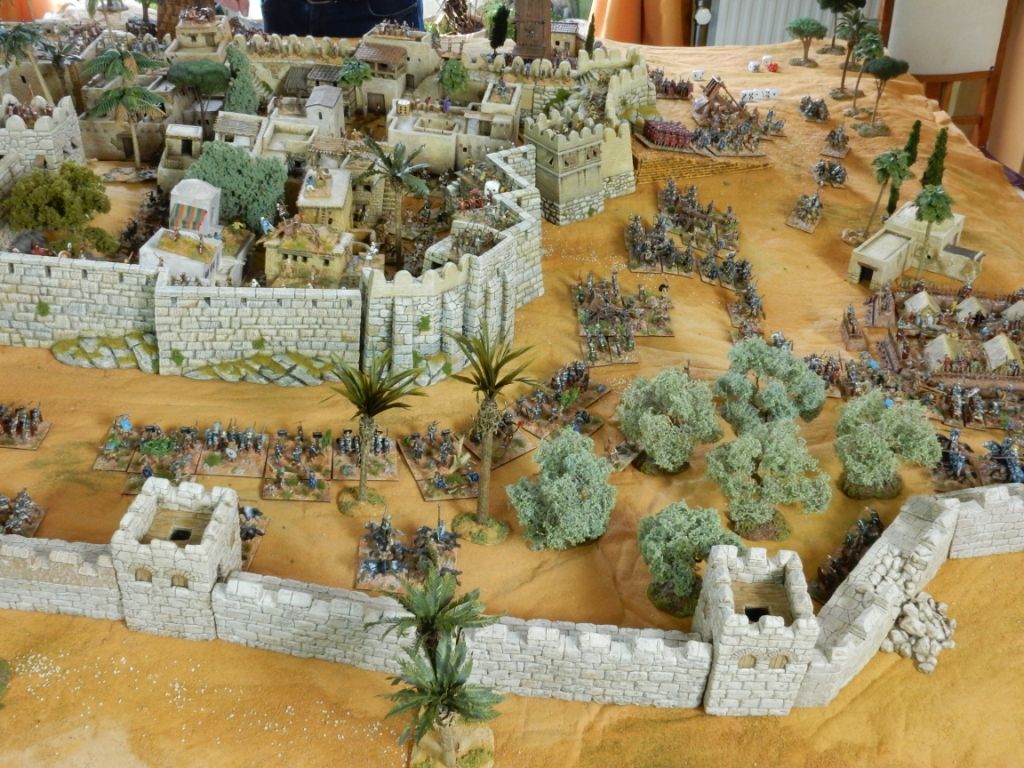
Mr. Bos his Roman camp with tents made of paper covering metal wire frames:
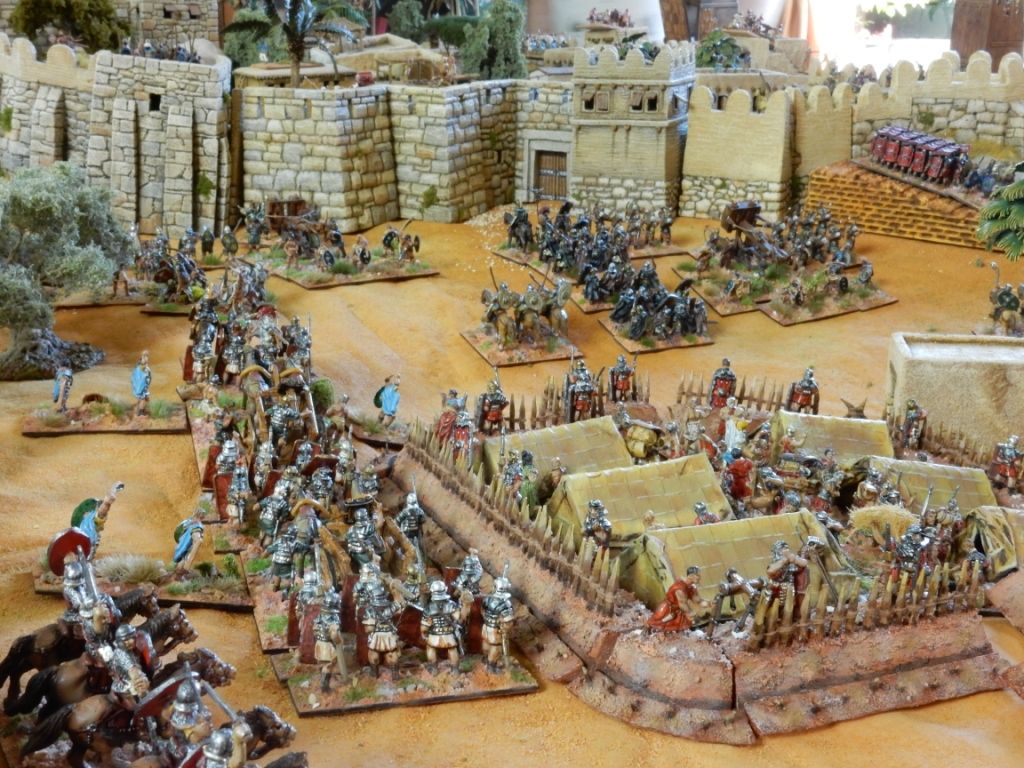
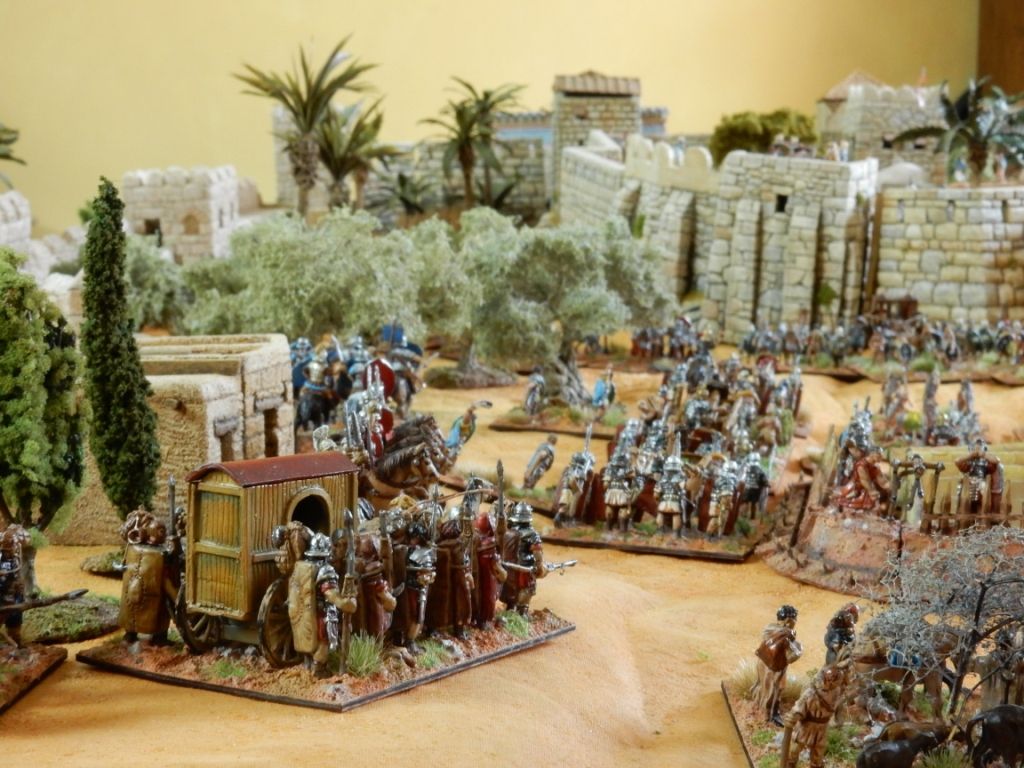
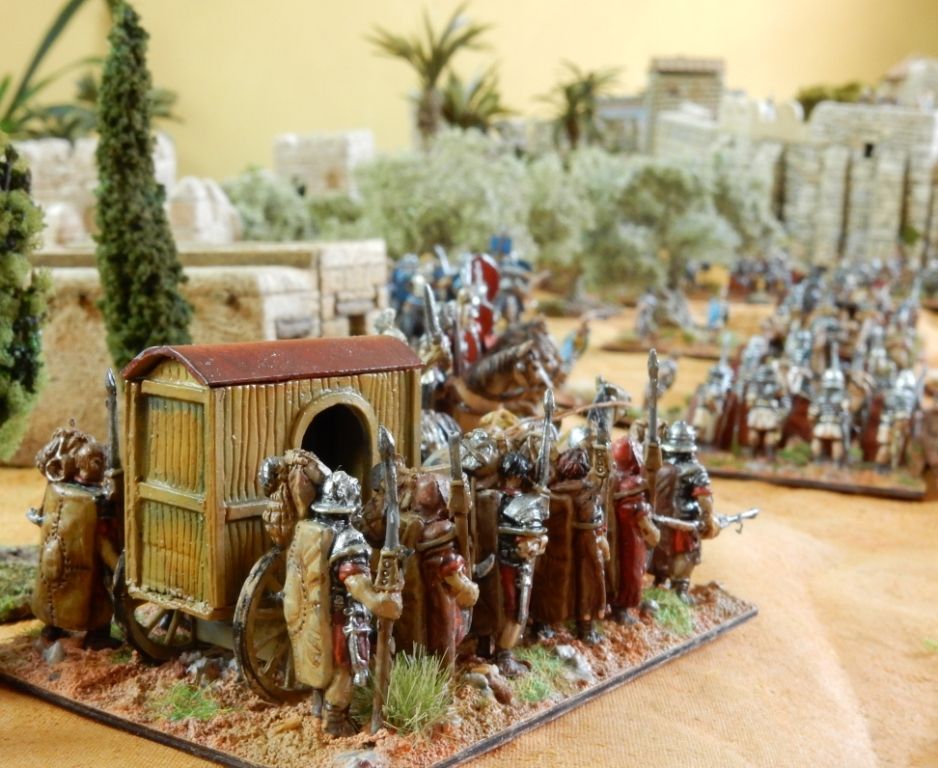
A biblic house made of plaster covered cardboard from my 1980's collection but I doubt if the vaulted roof was already in use for simple houses in those days:
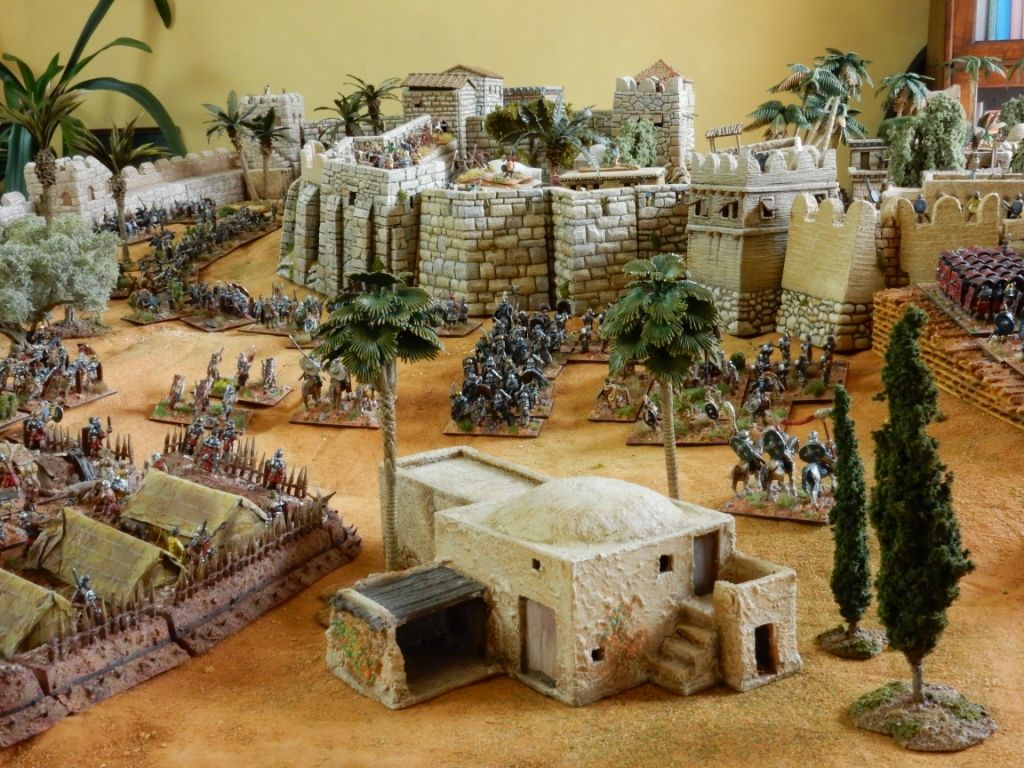
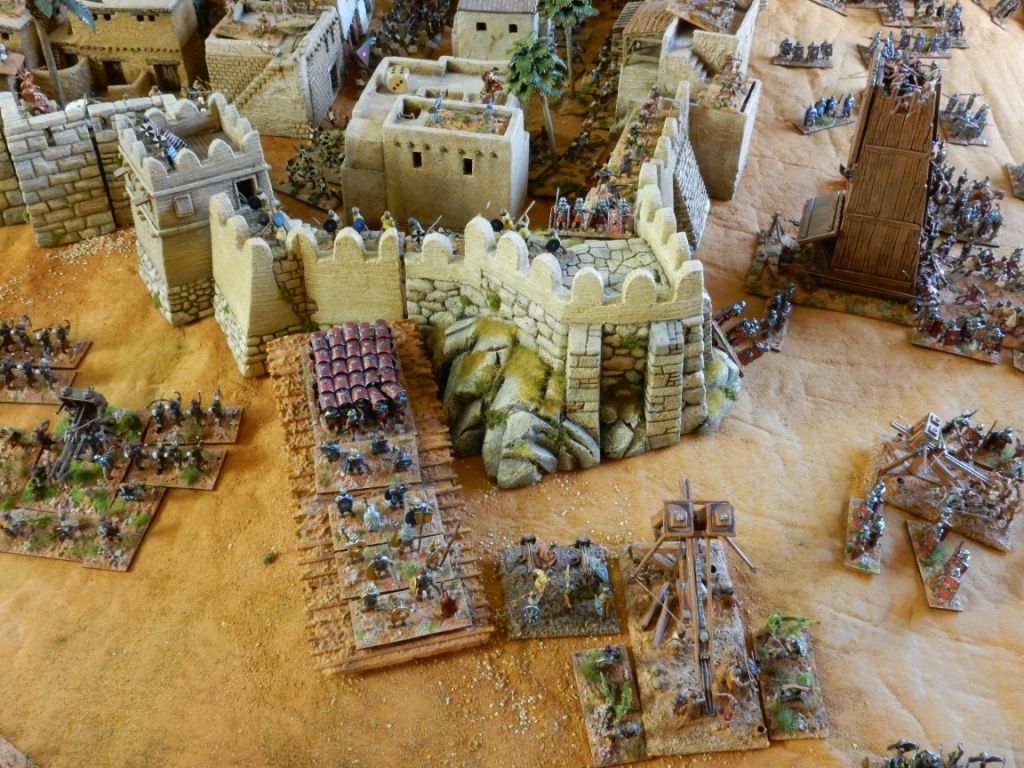
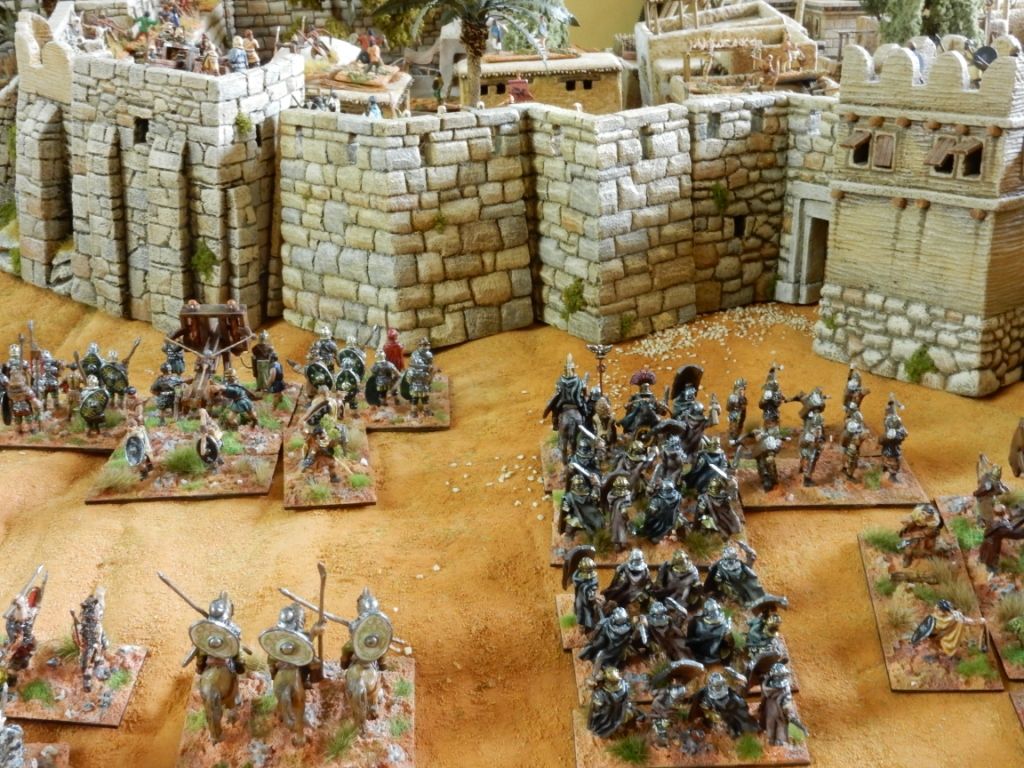

Siege ramp made of foam&wood by Mr. Bos:
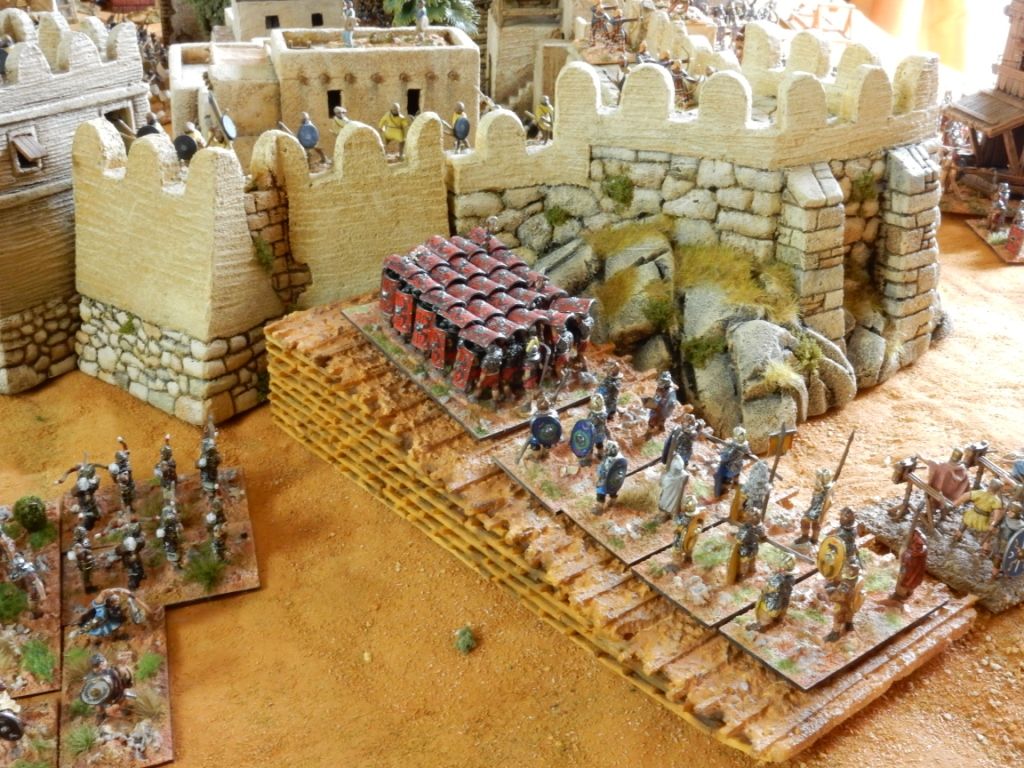
My giant stonethorwing catapult made of cardboard back in 1986:
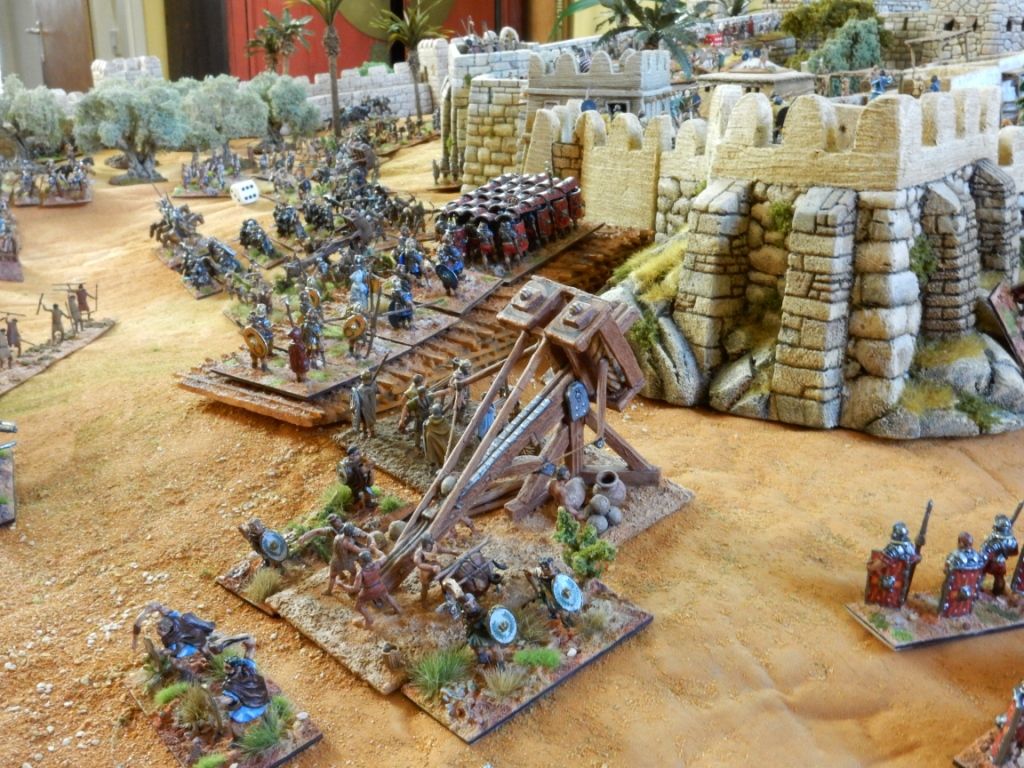
Atlantic siege tower (stuffed with ancient Greek crew)
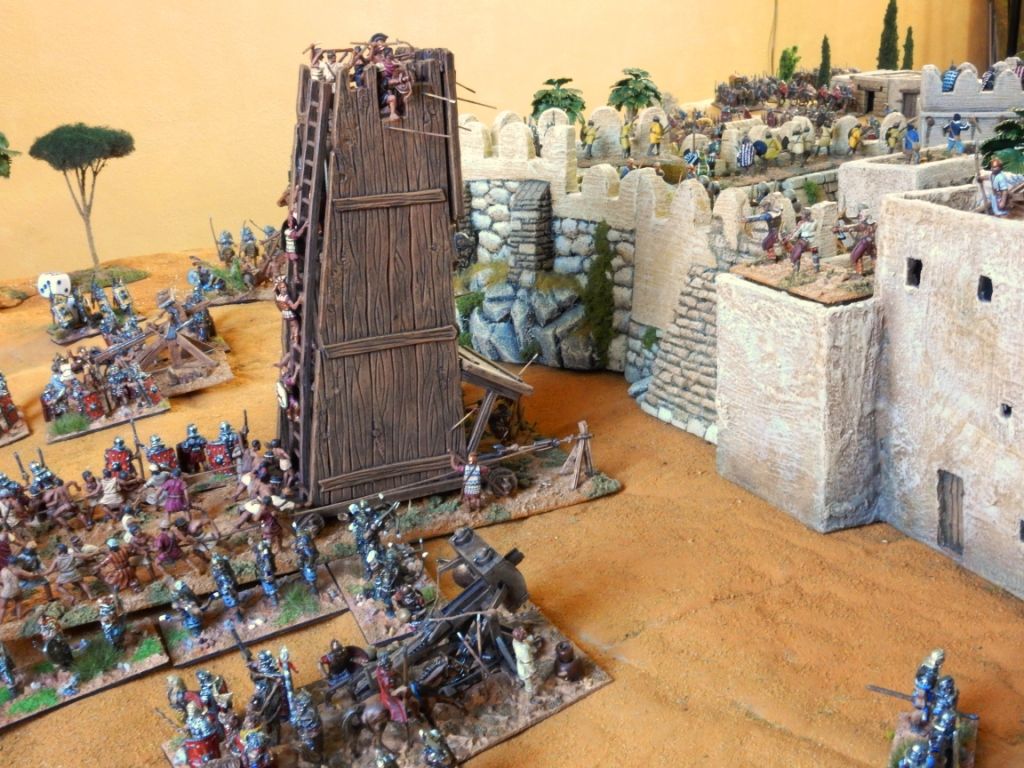
Mr. Bos equipped the Zvezda siege tower very cleverly with 'neutral' figures so it can be used for both Ancient Greek and Imperial Roman games.
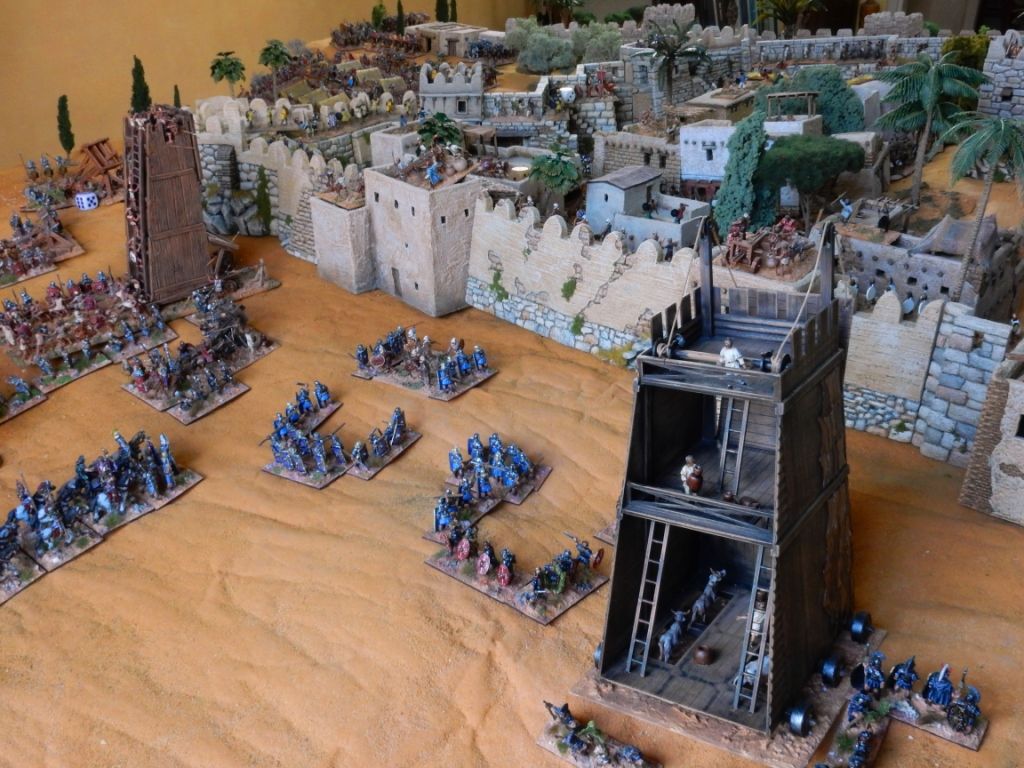
We added an extra gaming-feature: secret tunnels used by the Zelotes to undermine the Roman siege machines. I draw these on a secret paper so as soon as my opponents are faced by Jewish fanatics appearing out of nowhere, I can show them I am not cheating but those tunnels were dug before
 Thats why those catapults are guarded with lots of legionaries and in spite of that in the picture above several machines got destroyed and removed from the table.
Thats why those catapults are guarded with lots of legionaries and in spite of that in the picture above several machines got destroyed and removed from the table.Some houses used as towers, thats why the bases of the ballista's and crew don't fit
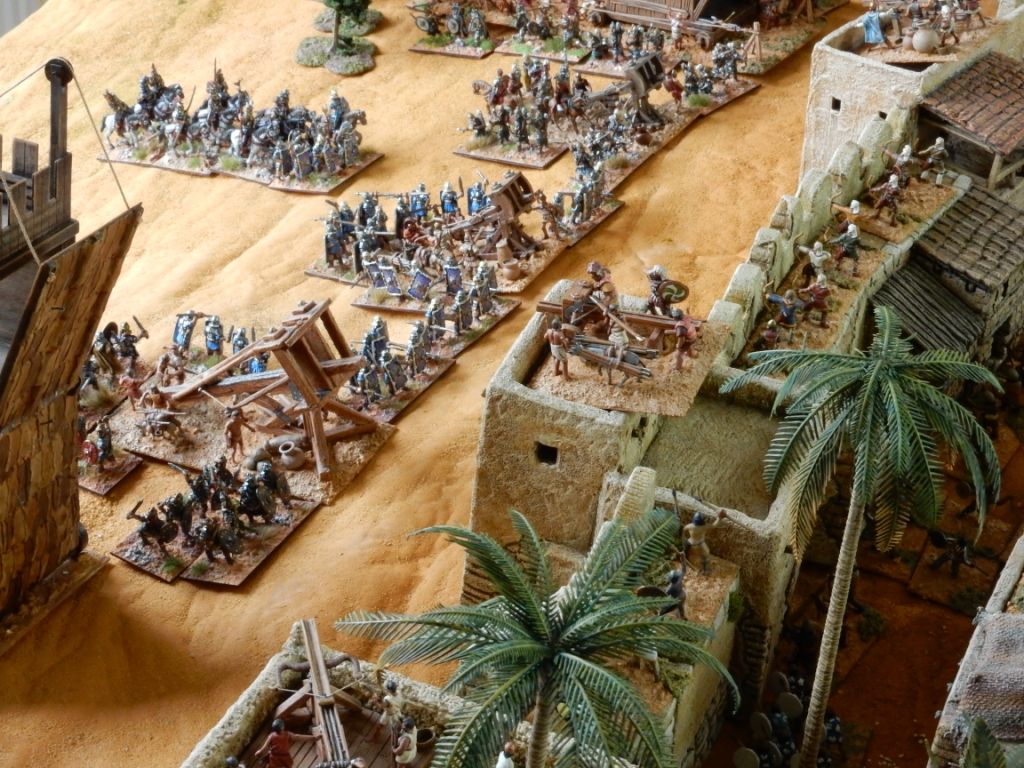
Dice on top of the citywall representing the initiative points used by the commander of that particular wall section in that particular gaming turn:
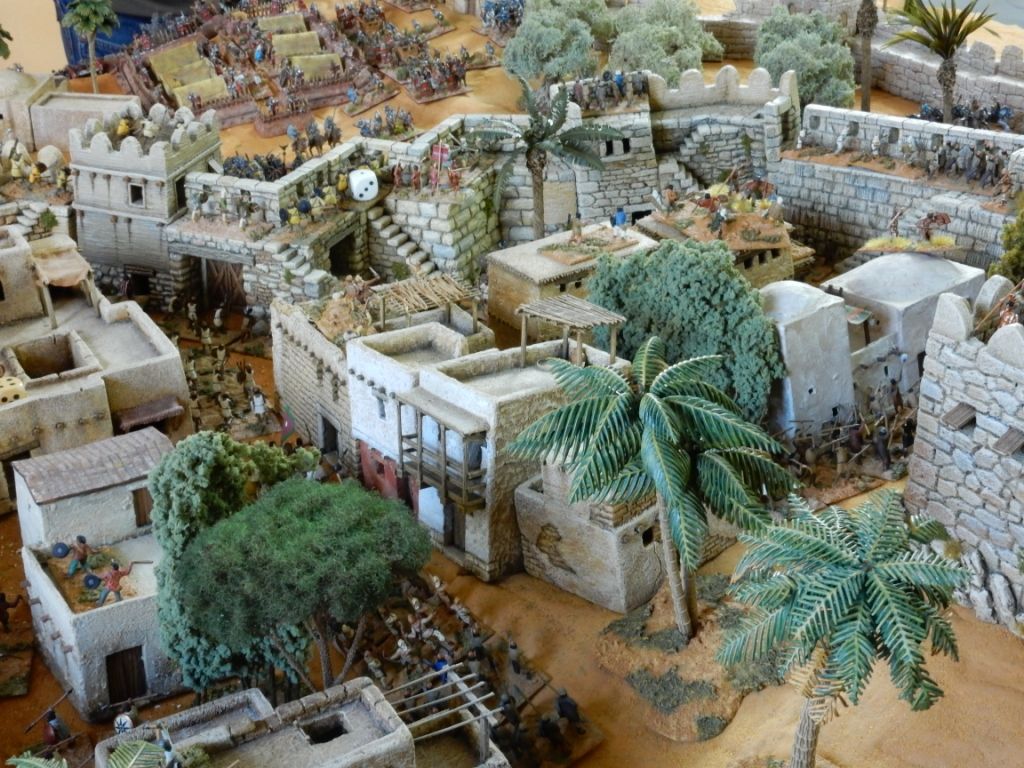
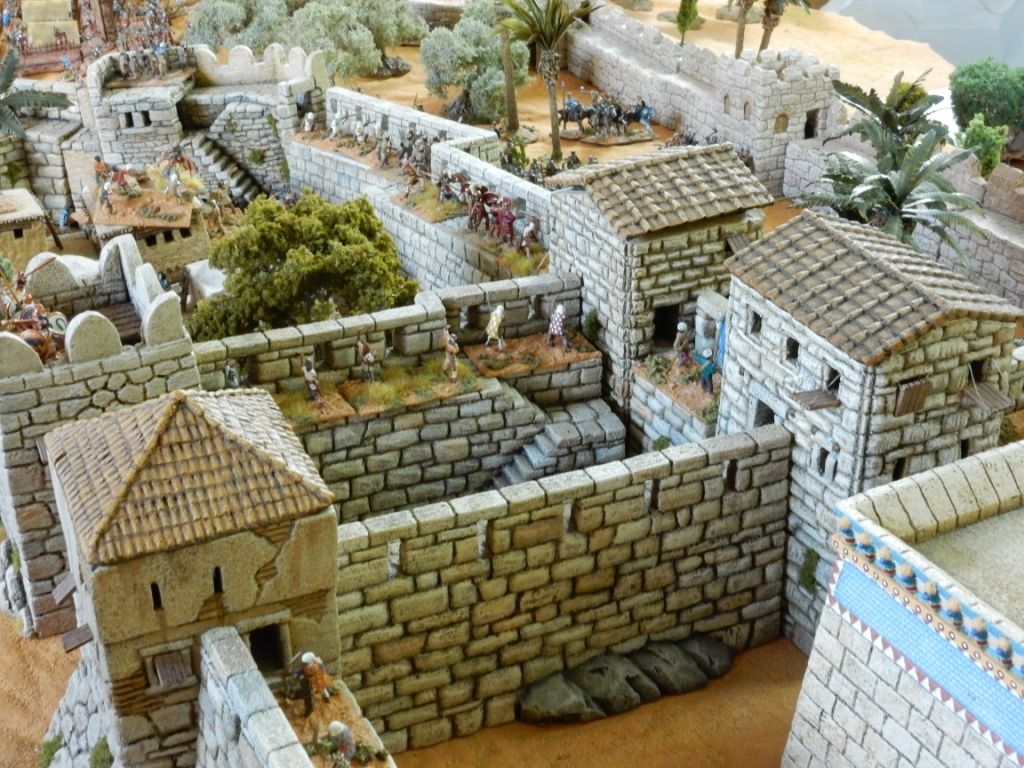
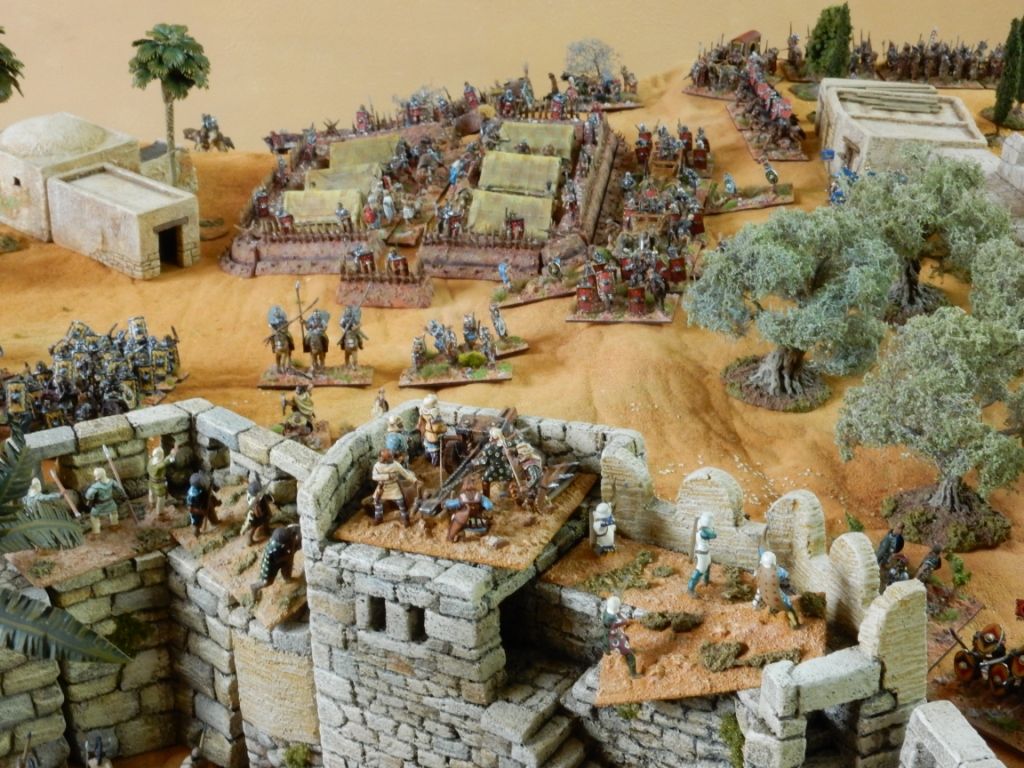
Phoenician temple representing the platform (not the right spot) of the second Jewish temple:
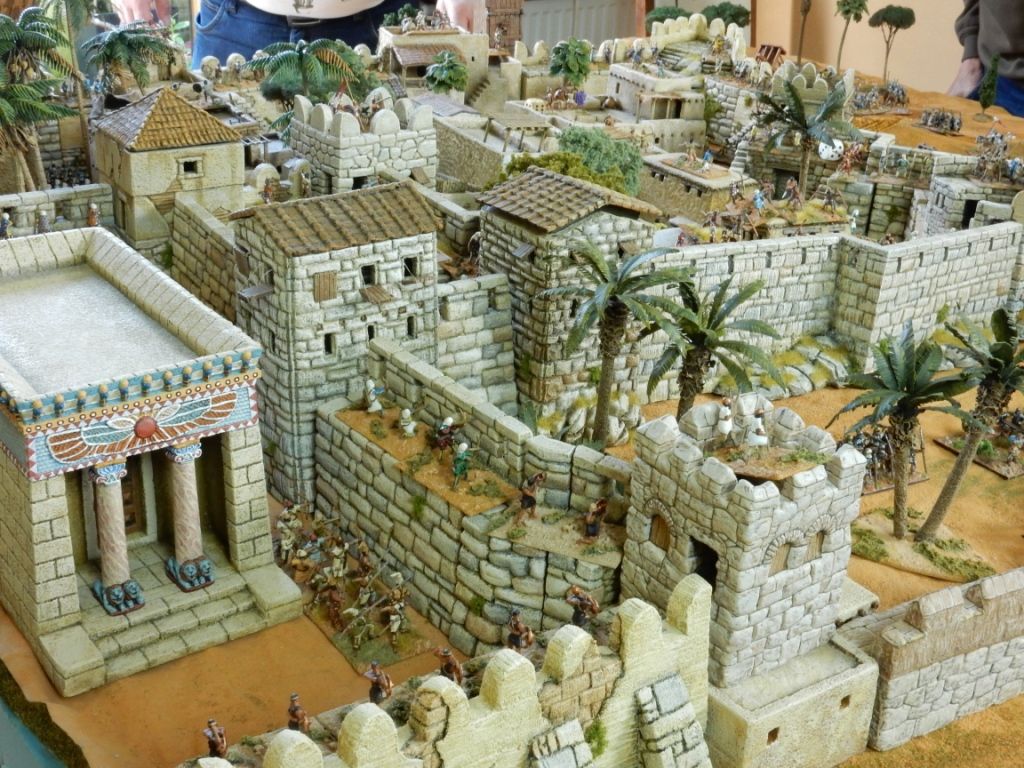
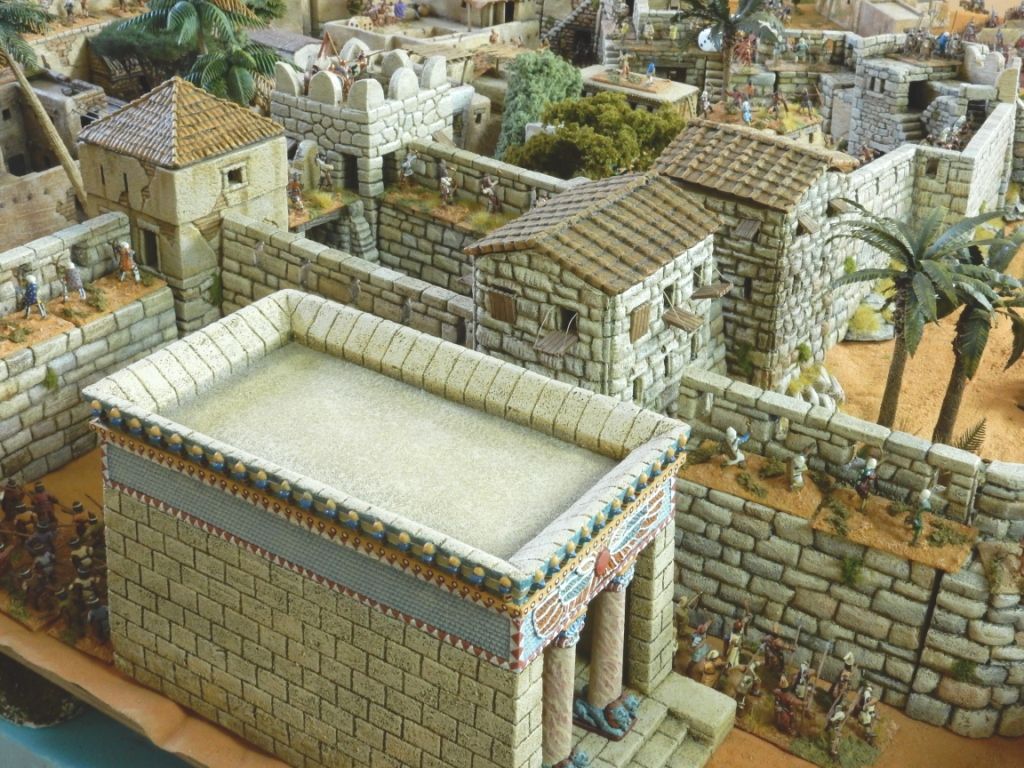
At the end of our gaming day (21:30h) the Romans had occupied many wall sections and towers of the 2nd wall. The Jews started to retreat to the Antonia Fortress and the Tempelmount.


 Supporting Business
Supporting Business






 Supporting Member (Silver)
Supporting Member (Silver)
 Moderator
Moderator